The Au Sable River in Michigan is my favorite place on earth. This movie tells its story. My friend RT was gracious enough to let my Dad and me share our family’s connection with the river. Here’s the trailer (click through the link to see options for viewing the entire film).
Author: Willy
A Honeymoon with Friends, a Taxi with the Meter Running, and my Search for Japanese Trout
I first told this story as a series of Instagram posts (Part 1, Part 2, Part 3, Part 4, Part 5, and Part 6). It took me a year to finally write up the whole story. If you have any questions or comments, e-mail me here.
Multiple people told me that I shouldn’t go fishing on my honeymoon. What does that say about me?
Amy and I worried that our wedding weekend would wear us down too much to immediately embark on an exotic trip (rightfully so–I woke up with a nasty cold the next day), so we planned a “mini-moon” to start our marriage off with a few days of relaxation and togetherness. Amy might have thought that a trip to the desert would help me avoid the temptation of trying to go fishing, but the resort we stayed at offered guided fishing trips on the Colorado River. Unfortunately (or fortunately depending on how you look at it), the price for a half day made the $7,200 helicopter trip to the Grand Canyon seem like a good deal. I took it as a sign that I really shouldn’t go fishing on my honeymoon.
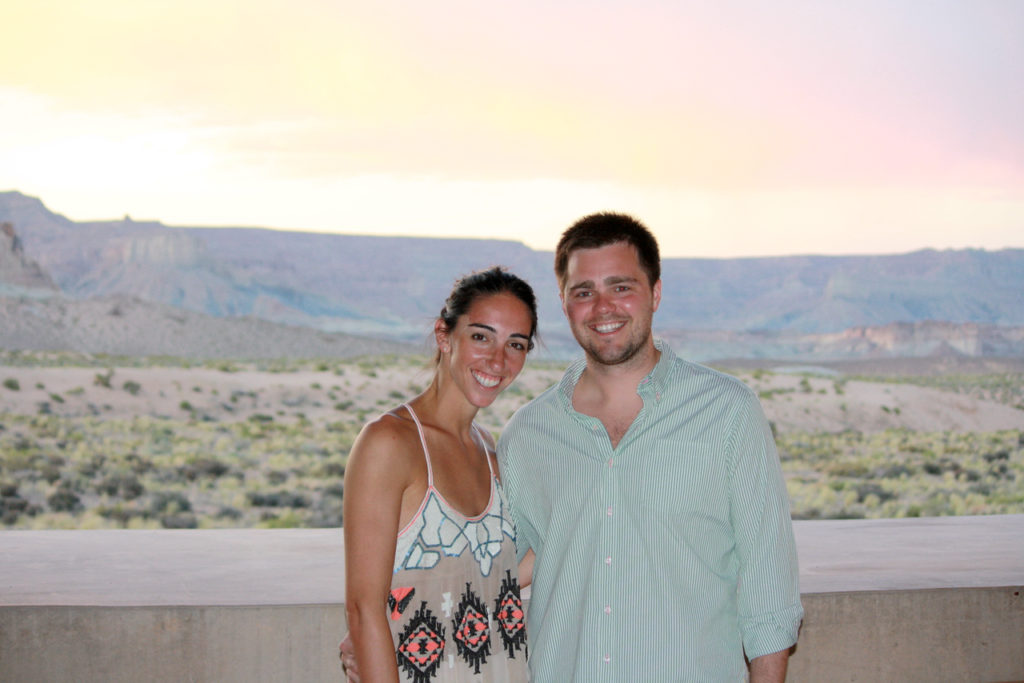
The plan for our “real” honeymoon was Japan. We both love the food, and we were excited about the idea of feeling isolated together in a country that is so culturally different (and where almost nobody speaks English). There’s also something fascinating about a country that is as “developed” as the United States (if not more developed), yet completely unfamiliar. But mostly we wanted to eat everything that Japan has to offer.
As excited as we were about Japan, we kept putting the honeymoon off. We spent most our vacation time with our families (my Dad also turns every trip into a fishing trip), and we got a puppy! In the interim Amy traveled to Japan for work, which eliminated the idea of going somewhere that we had both never been to. We started considering other options.

Moving from Chicago to Portland, OR reinvigorated our excitement about going to Japan. The night that we arrived, we bought dinner at a Japanese grocery store. We immediately noticed the Japanese influence on the Pacific Northwest. When we realized that a flight to Japan wasn’t much longer than flying back to Connecticut to visit my family, it became clear that 2015 would be the year that we would finally go on our honeymoon.
And then another couple proposed an interesting idea: going to Japan together. The only catch was that we’d have to do it as part of a tour group. Amy and I like to plan our own trips and do our own thing–we usually center our vacations around restaurant reservations (and fishing!); however, our friend had recently started working for the tour company, and she could get us a mega discount if we did this tour of Japan with her and her husband (and a bus full of people 40-50 years older than us). It would be two weeks of seeing Japan’s most amazing sites with professional tour guides, staying at the best hotels, and eating amazing food in the company of great friends.
It’s not quite what comes to mind when you think of a honeymoon, but it’s an offer that you don’t pass up. When I realized that our trip to Japan was no longer our official honeymoon, my mind immediately went to fishing. Japan has a variety of trout-like species that I was dying to catch.
Fly Fishing Otaku
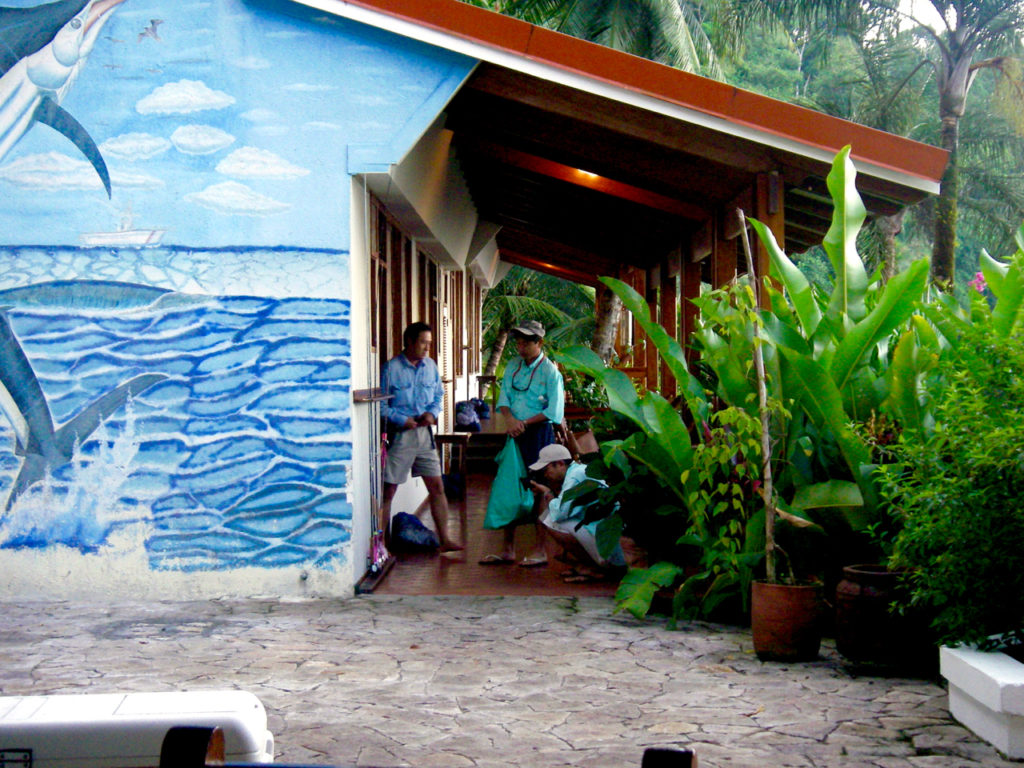
My first encounter with Japanese fly fishermen was in Costa Rica in 2007. I had just graduated college, and I joined my Dad and two of his friends for a few days at Golfito Sailfish Rancho (sadly, the lodge is now a yoga retreat). We were the only Americans in for the week–everyone else was from Japan. Only one of the anglers spoke English, but we were still able to communicate with the rest of the group through the common language of fly fishing.
These guys were serious about fishing! This is where I learned that if the Japanese are going to do something, they’re going to go all the way. The rod racks outside of these guys’ rooms were loaded with the latest Sage rods and Abel reels–top of the line gear that had never before seen the salt. If you’re going to travel more than 8,000 miles to go fishing, it doesn’t make sense to scrimp on your gear.
I spent a lot of time talking with the sole English speaker in the group. He gave me a card and told me to get in touch if I ever made it to Japan. He said if I was impressed by his passion for fly fishing, then I absolutely had to see his RC helicopter collection.
I really should have held on to that guy’s card.
It’s always hard to get straight information about a fly fishing destination. The lodges, guides, and outfitters want you to think that they’re in the “last best place,” while the locals are eager to inform you about the rattlesnakes, grizzly bears, and giant mosquitoes. Online “hot spotting” can be a real problem for a river, but I also think that sharing information–even on locations–is generally good for the sport.
Researching fly fishing in Japan was a completely different story. It wasn’t that people were withholding information–it was that it just wasn’t easily available to me. I know a lot of people in the fly fishing world, yet none of them had ever fished in Japan. And the websites that I could find were… shockingly… in Japanese.
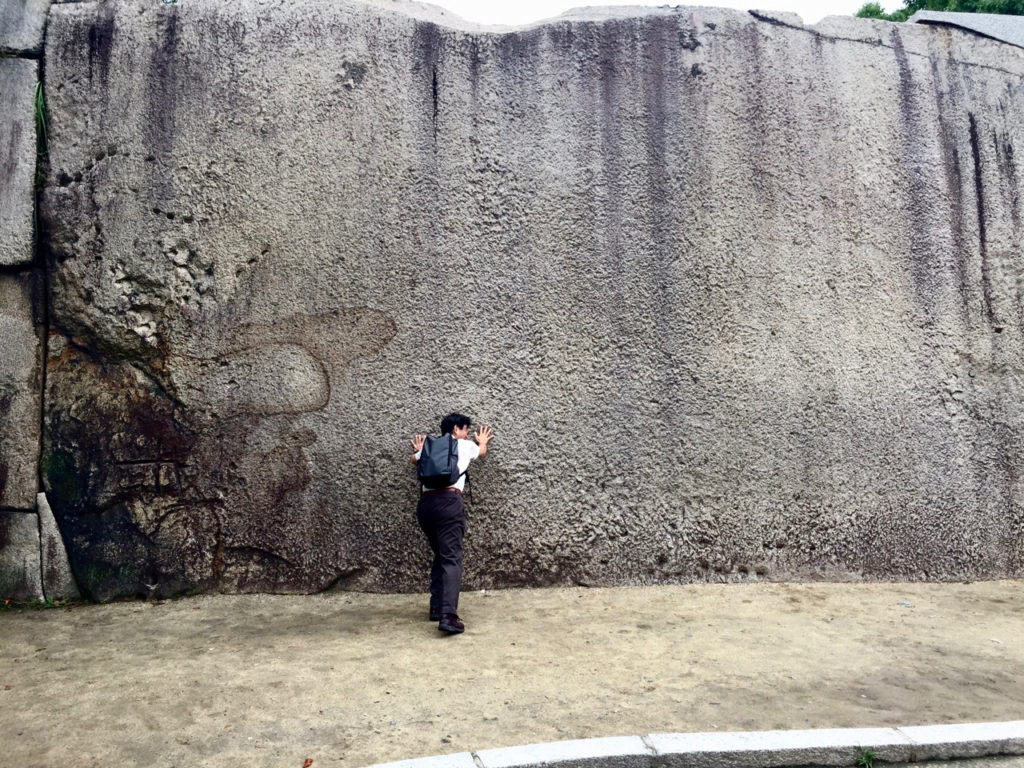
I posted a plea on Facebook and got one response from my friend Phil Cook, who works at Scientific Anglers. He knew a guy named Rick Smith who works at The Rivers Edge in Bozeman, MT and is a fanatic about fly fishing in Japan. I gave Rick a call and he gave me a brief education on the trout of Japan. Much of his information was specific to his experiences, but he gave me a good foundation for doing more research. Most importantly, he introduced me to Masa Katsumata, the owner of Maverick Company, which imports American fly fishing gear to Japan while exporting Japanese gear to the U.S.
I Facebook messaged Masa, and he replied that I should call him. He took me deeper into the world of fly fishing in Japan. He told me more about the available species and where to find them. Yamame and amago are closely related landlocked subspecies of the cherry or masu salmon, while iwana are a type of char (like a brook trout). These three species are native to Honshu, Japan’s main island, and make up the “trout of Japan” that I would be chasing.
Masa even offered that he would have loved to take me fishing, but, unfortunately, he would be in the United States while I was in Tokyo. I shared my itinerary with Masa, and he identified Takayama as my best shot for catching yamame. He told me that there were no fishing guides in that area and that I would likely need a car to get to any worthwhile fishing spot, but if I was able to figure out transportation, I could purchase a fishing license at the local 7-11.
Masa also explained to me that tenkara and fly fishing were seen as two very separate disciplines in Japan. A fly shop would not carry tenkara gear like they do in the U.S. That was surprising to me, as I had planned on seeking out a fly shop to purchase a tenkara setup there. It seemed like a better idea than carrying around fly fishing gear for two weeks when I may not even get the chance to use it.
Masa had helped me form a rudimentary game plan, but I knew it would take a lot to actually get on the water.
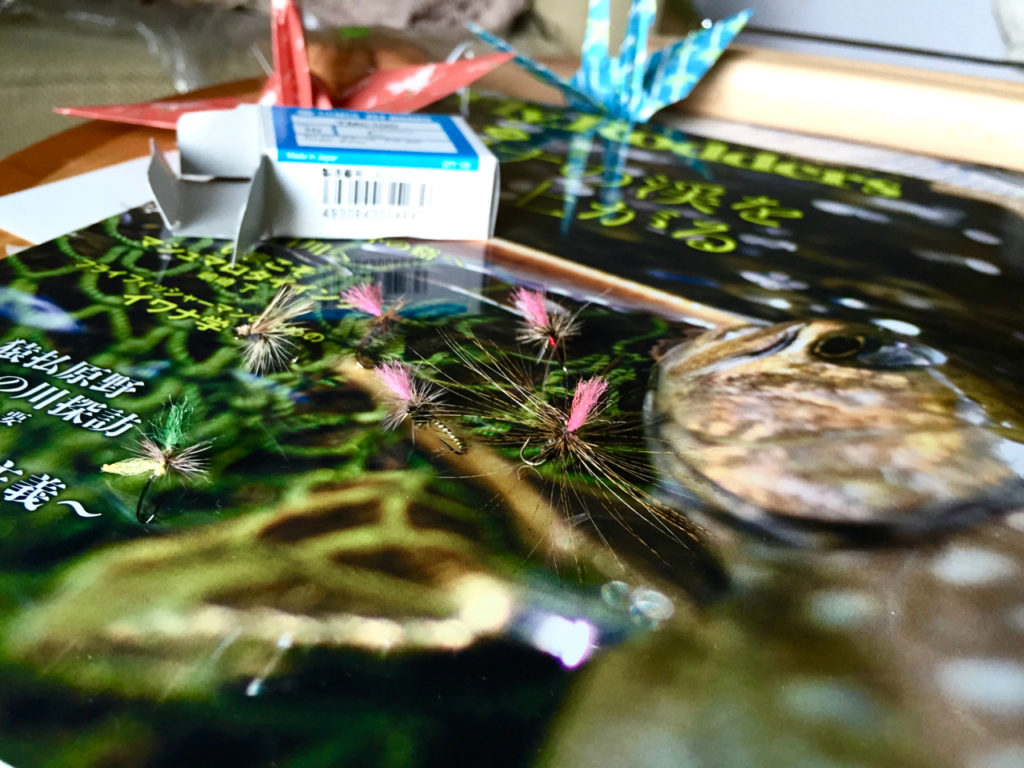
My one last hope for information was Dave Hughes. I had seen one of his presentations at a local TU meeting, and fly fishing in Japan came up multiple times. When I first saw the presentation, fly fishing in Japan wasn’t on my mind, but now I had to e-mail Dave to see if he had any more information. Unfortunately, he was short on specifics with regards to the Takayama area, but he gave me some recommendations on Tenkara gear and directed me to a few websites that might have more specifics on location.
I am so thankful that Rick, Masa, and Dave took the time to point me in the right direction. Their guidance gave me a lot more confidence in my search for Japanese trout, but it still felt like a long shot that I would actually make it to a trout stream. Leading up to the trip, I kept poring over Yoshikazu Fujioka’s website My Best Streams to learn more about locations, but I knew that I’d have to do the real legwork when I got to Japan.
Konnichi wa
The tour started with a cocktail reception. We met our new travel companions, learned a few cultural no-nos to avoid, and discussed the plans for the next two weeks. We were urged to seek out the tour director to make special requests–they wanted this to be the trip of a lifetime for every person in the group. I knew what my special request would be. Unfortunately, my request was truly special–the tour director had never had anyone want to go fishing before. He lived in Japan and spoke Japanese, but he certainly didn’t speak fly fishing. I told him that Takayama seemed like the best bet (and he agreed that it was probably the most appropriate part of the trip to sneak away), but that I’d like to find tackle or fly shops beforehand so that I could learn more and prepare for a potential morning of fishing.
On the first real day of the tour, we drove by a fly shop in Hiroshima (Sasaki). There was no stopping the bus full of people who didn’t care about fly fishing, as we were on to the next sight to see. I had missed my first opportunity, and I wanted to make sure it wouldn’t happen again. Every morning I would look at our itinerary for the day and try to match up with nearby fishing shops. I didn’t have a data plan on my phone, so I would mark the fishing shops and think of escape plans during our activities.
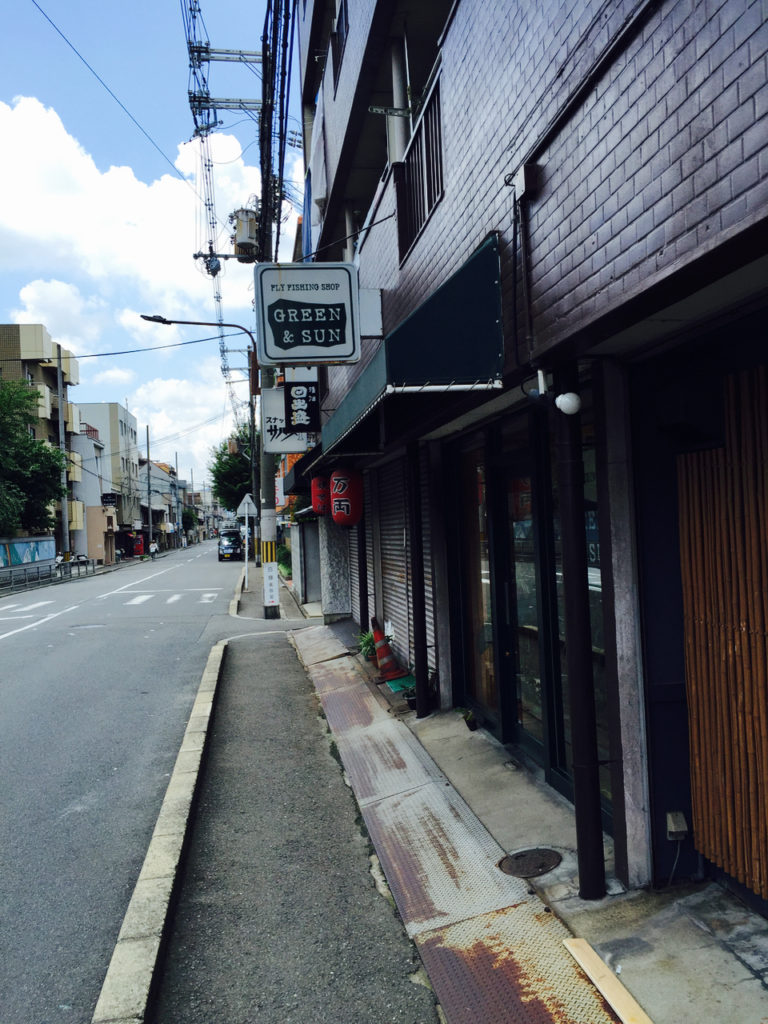
My next opportunity came during a tea ceremony and origami lesson. I had read about Green & Sun Fly Fishing Shop in Kyoto on The Classic Fly Rod Forum, and I saw that it was nearby and couldn’t stop thinking about sneaking away. When the rest of the group got back on the bus to return to the hotel, Amy and I escaped and headed for Green & Sun. Amy thought she was just being a supportive wife, but she thoroughly enjoyed watching me try to communicate with the shopkeeper through the language of fly fishing. We were both struggling big time, and Amy thought it was hilarious when one of us got excited about recognizing a word in the other’s language.
As I expected, Green & Sun didn’t have any tenkara gear, but I did buy some flies and a Japanese fly fishing magazine. I didn’t get much more intel on fishing the Takayama area, but it was a step in the right direction.
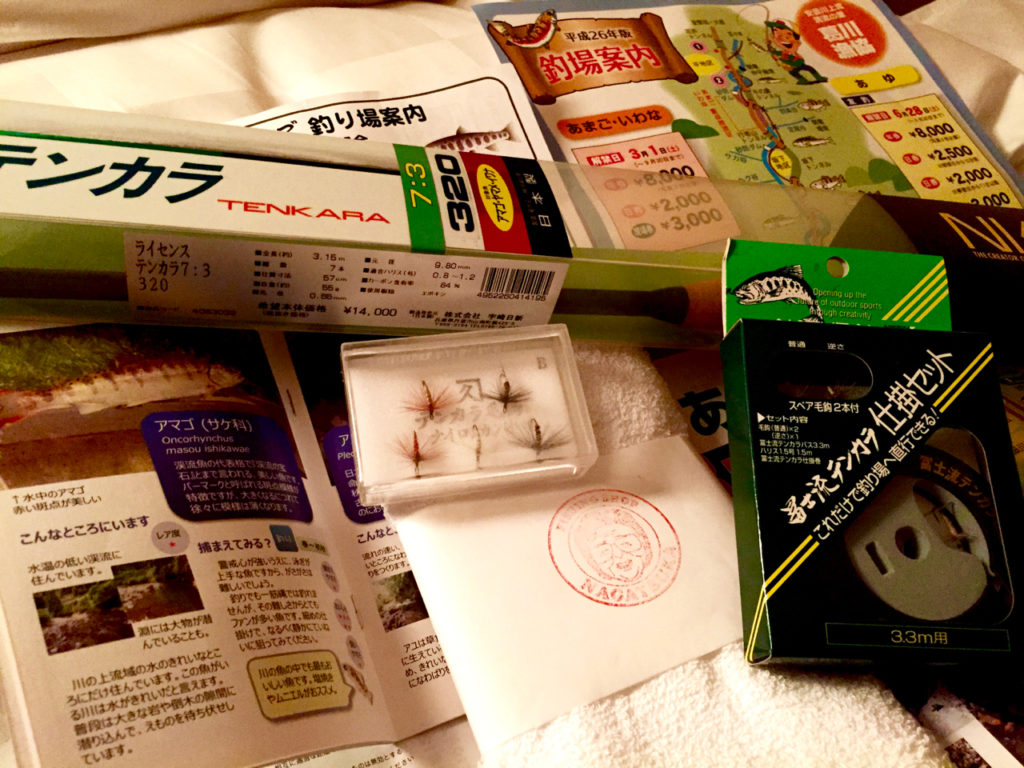
My next escape was during our return trip from Nara. As the motor coach followed the Kamo River (filled with carp!) towards our hotel in Kyoto, I saw that we were approaching the Nagatsuka Fishing Shop. I knew it wouldn’t be a fly shop, but I figured that I might be able to find the tenkara setup that I was looking for. As I entered, it became clear that the small storefront was attached to someone’s home. I was greeted by an old woman who immediately sent for her better-with-English-than-her grandson when she saw my face. He and I were able to communicate well enough for me to purchase an appropriately sized Tenkara rod and line along with a few more flies. I also got a free towel (cleanliness is important for the Japanese fisherman) and a few maps and brochures with information on fishing opportunities and regulations. They were all in Japanese, but I could at least show them to the tour guide to see if any opportunities might be nearby.
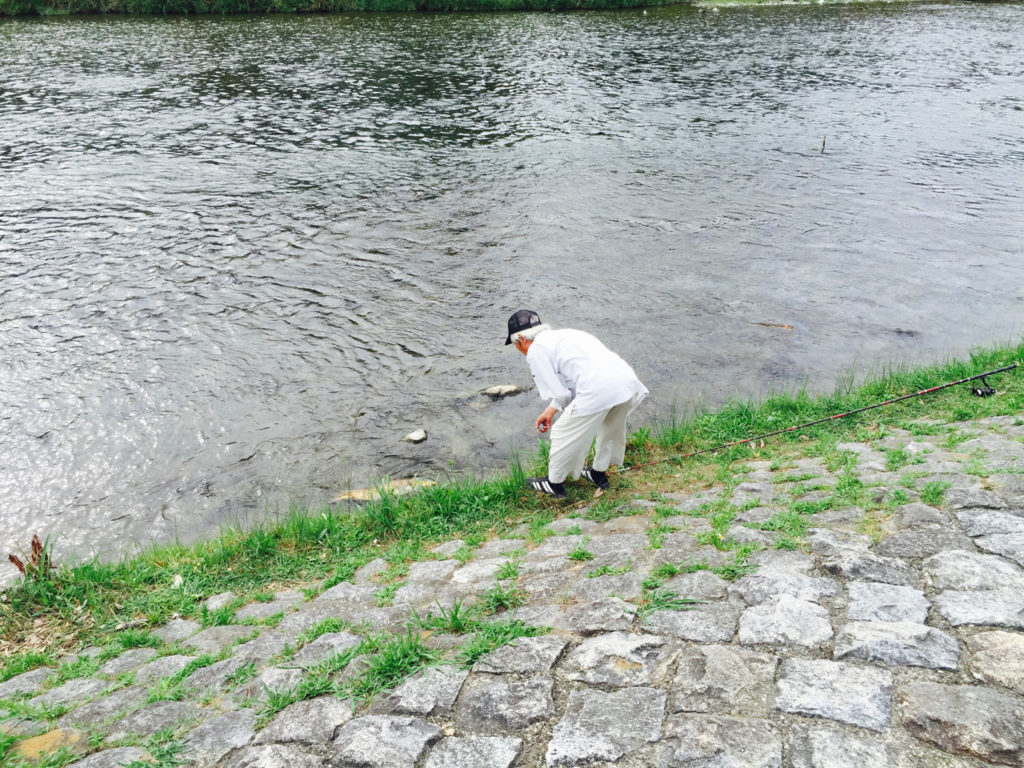
As I walked back to the hotel, I was one step closer to catching a trout in Japan. It was fitting that I saw this guy landing and releasing a nice sized carp, and another guy who I think was fishing for ayu with a very, very long rod.
The Japanese Alps
After a one night stay in a very strange onsen in Nanao and a tour of a rice farm, we made our way through the mountains towards Takayama. Everything looked right. The scenery reminded me of Vermont (where I spent two summers interning for Orvis), and our stop at the Villages of Shirakawa-go only confirmed my suspicions. There were tiny creeks running through the village, and they were filled with rainbow trout! And they were big! These weren’t the native species that I was looking for, and they were more likely pets or aquaculture, but I had found trout in Japan… and not on a menu!
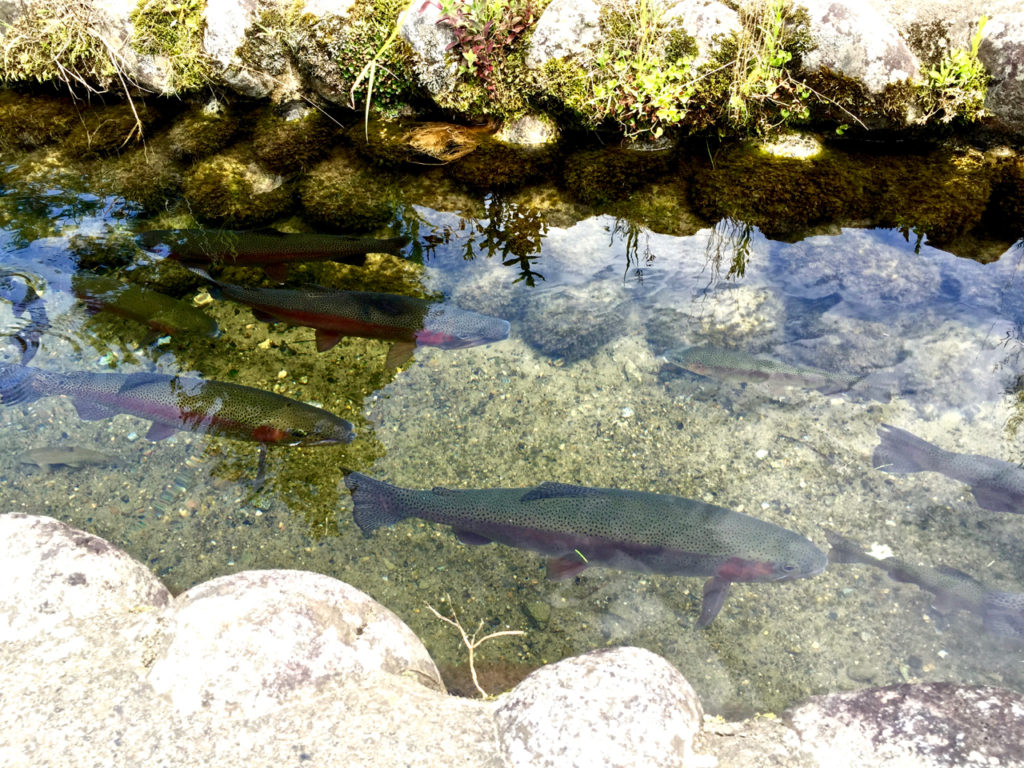
As tempting as it was to run to the bus to grab my tenkara rig and fish to these fish, I knew that it probably wasn’t allowed. I didn’t have a license, and these were probably somebody’s fish. However, I did amuse myself by finding one small trout in small pool and tying pieces of grass together to imitate a bug. I got him to eat something that wasn’t food, so at the very least I could say that I fooled a trout in Japan. It was something.
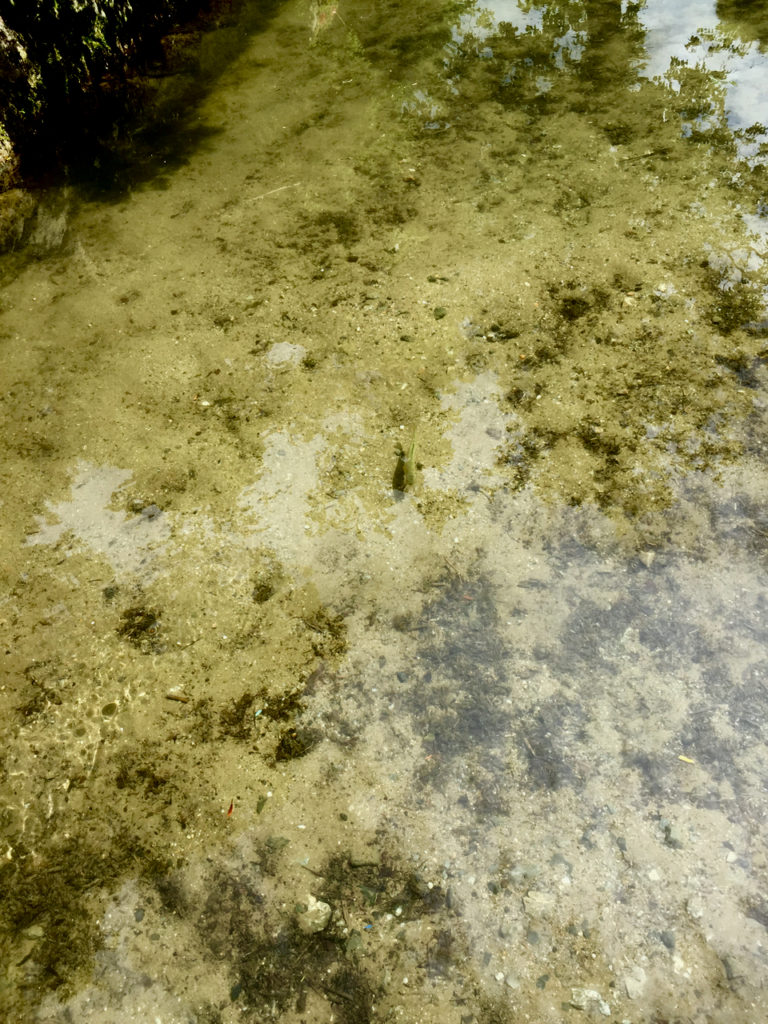
We continued on our way to the Hotel Associa Takayama Resort (though I have a suspicion that we took a detour to a hydroelectric dam so as to allow the hotel more time to get our rooms ready). While everyone else was checking in and getting settled, I’d be heading to the nearest tackle store to figure out when, where, and how I could get myself on a river to fish for Japanese trout. It still felt like a long shot, but the Tour Director had set me up for success as best he could. He put me in a cab with our “local” tour guide KoKo-san. While she was an expert on many of the historical sights of Takayama, KoKo wasn’t actually a local. She was a city girl from Tokyo who happened to be dating a serious fisherman. Still, she didn’t speak the language of fishing, but she spoke both Japanese and English, and that was what I needed…
Fuku
KoKo and I discussed our game plan for the tackle shop as we waited for a cab to pick us up from the hotel. As soon as we got in the cab together and she told the driver where we were going, his face lit up. He knew exactly where we were going. The cab driver was a fisherman!
The cab driver talked nonstop on the way to the tackle store. KoKo-san did her best to keep up with the translation, but his excitement told me everything I needed to know. Hiroshi was a tenkara fanatic. When he was much younger, he had moved to Takayama because it was much closer to his favorite trout streams and the cab company happened to have an opening. He explained that he hadn’t been fishing much in recent years because of health issues but that he still loved the sport. When a conversation is so one-sided, Americans usually nod with the occasional verbal affirmation that they’re still paying attention. The Japanese use the word “hai.” KoKo must have said “hai” more than 200 times on the way to the tackle shop.
As soon as I saw where this conversation was going, I had an idea. The biggest roadblock keeping me from fishing was transportation. I didn’t know where to go or how to get there. A trout loving cab driver was exactly what I needed. When Hiroshi paused to take a breath, I asked KoKo to propose this idea. They had already talked about it! Hiroshi would have to check with his boss, but he thought that we could arrange something for a set fee.
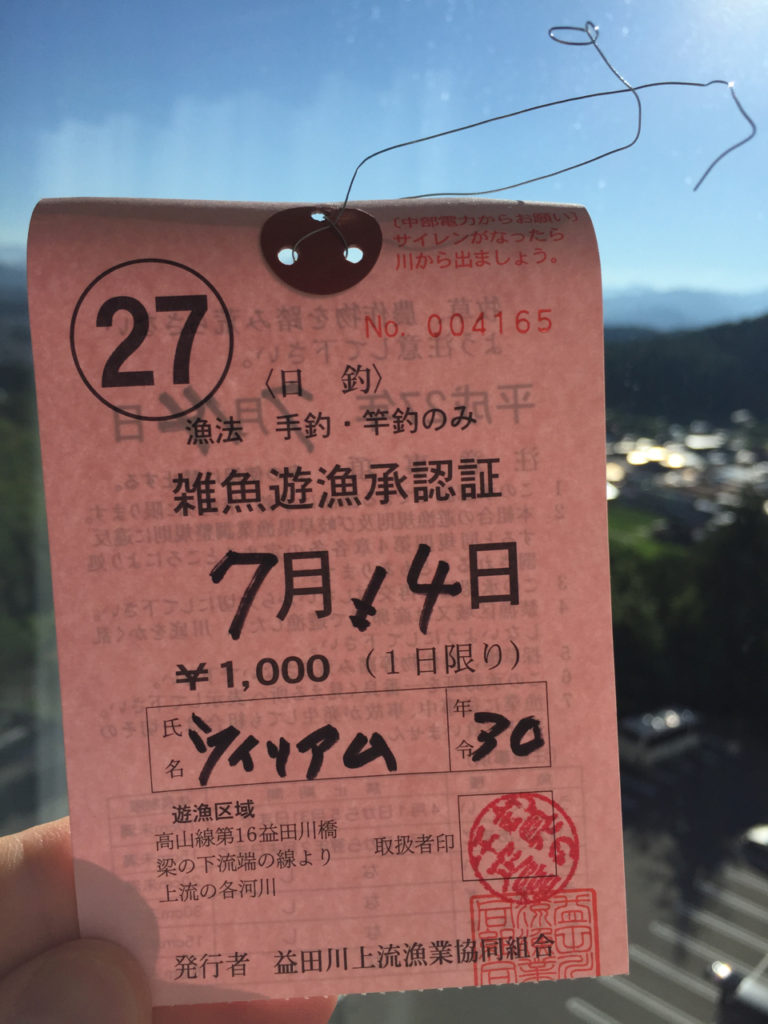
We continued on to the tackle store and Hiroshi helped me purchase the right license. In Japan fishing licenses are specific to the river system, so you need to know exactly where you’ll be fishing to have the appropriate license. Hiroshi knew exactly where we were going and what I needed. He was also very concerned about my equipment–I had to have the right tenkara rod with the right line size. In fact, he was so concerned that he drove us to his house (off the meter) and showed me what I should have to confirm that I had it. We were all set in terms of rod, line, and flies.
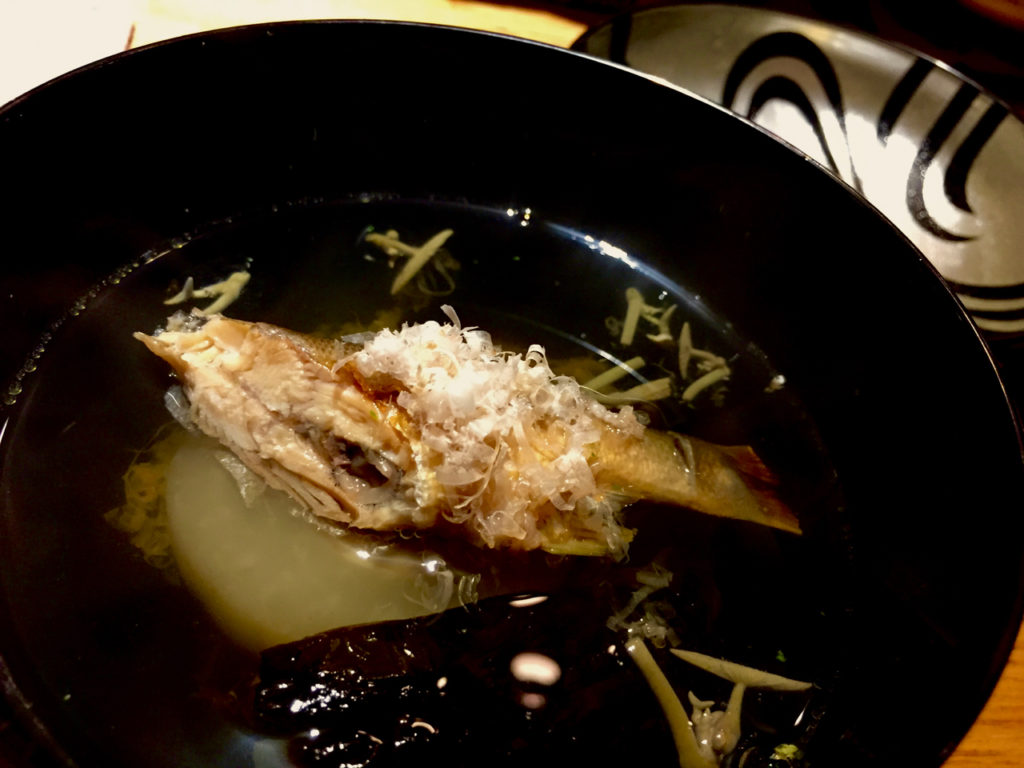
Hiroshi said that it was essential for me to meet him in front of the hotel at 4 A.M. We had to beat the ayu fishermen to the water. Ayu are also known as sweetfish. They’re a relative of smelt, and they’re a major food fish in Japan during the summer. We had it in a few meals, and I didn’t particularly like it, but I think it’s an acquired taste. Anyway, Ayu fishing is unlike any other fishing I’ve ever heard of. Ayu generally eat vegetation, but they are extremely territorial. As a result, ayu fishermen use live ayu as bait. The fish will trigger aggressive strikes from other fish who get hooked on the hooks that are attached the bait fish. Anyway, this type of fishing is very disruptive for the local trout species, so you don’t want to be fishing in a stretch that has already been fished by an ayu fisherman.
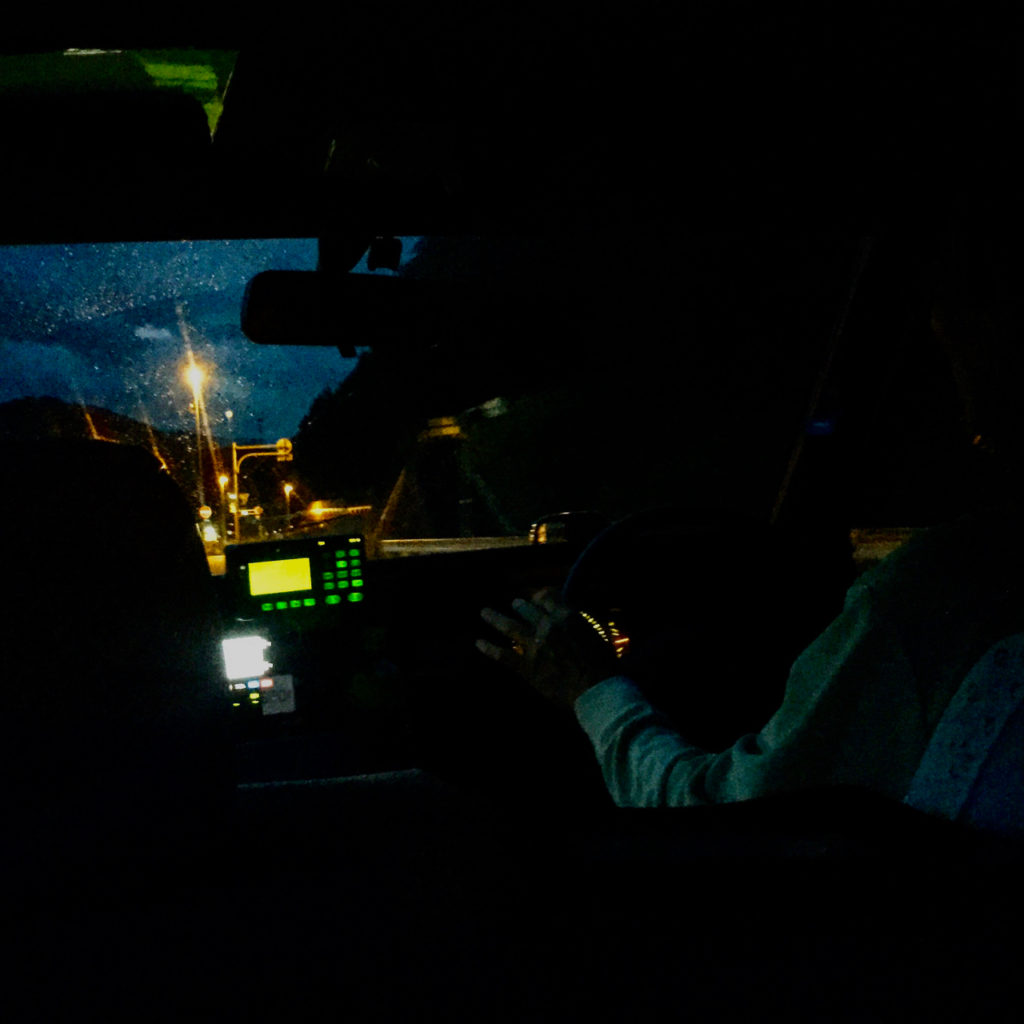
KoKo found me at dinner later that night to tell me that she had spoken with Hiroshi. There was a slight change to the plan. Hiroshi’s boss would not let him charge a flat rate, so we had to fish with the meter running. I’ve spent lots of money on fishing guides, but there’s something especially nerve-racking about the idea that every second you spend fishing is costing you more money. At this point, I didn’t care. A few thousand yen here or there wasn’t going to keep me from a Japanese trout stream.
When I got into the cab the next morning, I could sense Hiroshi’s excitement. It wasn’t the kind of excitement that a cab driver may exhibit when a stupid gaijin (foreigner) steps into his cab and tells him to run the meter for the next five hours (that wouldn’t be very Japanese anyway). It was genuine trout fever. The ride to the river was quiet–Hiroshi’s English was about on par with my Japanese. As we entered the river valley, we made a few wrong turns–I’m not sure if it was excitement, being away from his fishing spots for so long, or changes of heart on where we should fish. As we arrived at our first spot on the Hida River, day was about to break and mist was coming off the water. We walked down to a slow moving, flat pool just below a small weir. It was a typical trout spot. Hiroshi brought along his own tenkara setup, a few flies, and an… iPad?
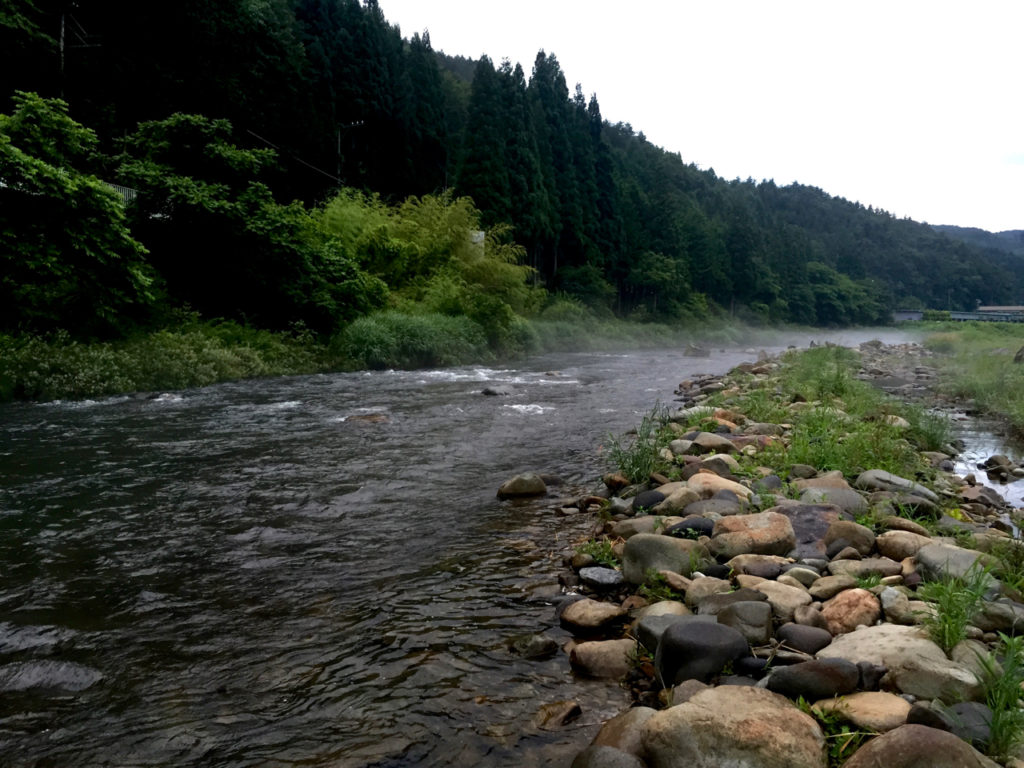
There were small fish rising everywhere. This was going to be easy.
As I pulled off my shoes and waded into the river barefoot (there was no way that I was going to haul waders around on a two week tour of Japan), I couldn’t decide which rising fish to cast to. I had never fished with a tenkara rod before, but I was using it as an easier-to-travel-with substitute for a fly rod. It was working well enough. My fly was going over fish–and occasionally they would try to eat it, but they were so small that hooking them seemed impossible (and I’ve hooked some very small trout). I don’t know if those fish were amago or something else–and I’ll never know. I had to work a little harder to catch a trout in Japan.
An iPad may seem like a strange thing to bring to a trout stream, but I knew what Hiroshi was thinking. He had a translation app that he hoped would make communication a bit easier. At first he tried speaking into it, but then decided based on my response that demonstrating would be more effective. He had given me a chance to fish my way, but now he was going to show me the way of tenkara.
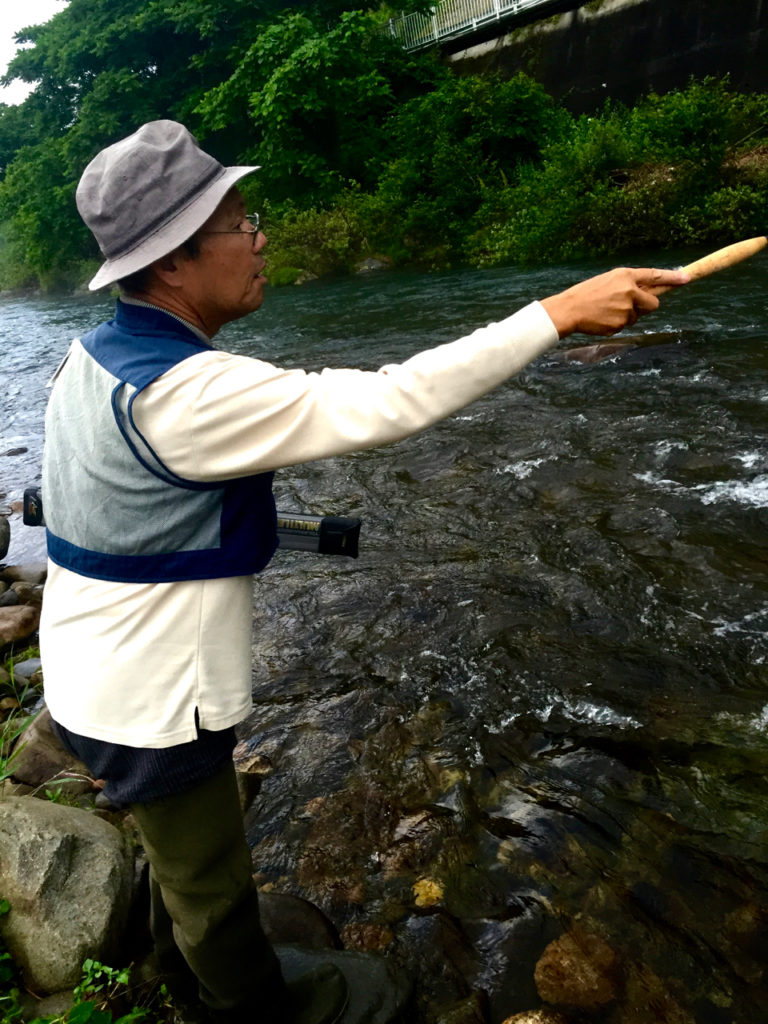
I half hoped and half feared that he’d hook a fish. I so badly wanted to see a Japanese trout up close, but it always hurts a little bit to see someone hook a fish when you can’t. Hiroshi had switched to a wet fly and was showing me how to work it on a 1, 2, 3 count (that’s as far as his English went). I would cast, work the fly twice on a slower than expected rhythm, and then pick up for my next cast on 3. Doing this repeatedly with a specially crafted tenkara fly is supposed to drive the fish crazy–and as soon as I got it just right a yamame came out from under a boulder and nailed my fly.
Unfortunately the hook didn’t touch him and no other fish came to the fly at this spot. The whole time Hiroshi carried his own rod in its case, but he never did string it up (if you can call it that with a Tenkara rod). Instead my brand new tenkara rig kept finding its way into his hands. He may not have fished in a while, but his technique certainly impressed me. Watching him fish the fly gave me a new appreciation for Tenkara as a fishing discipline separate from fly fishing. While a new river, a new way of fishing, and a new friend had already made the day a success, there was still the matter of my catching a new species.
Hiroshi thought that a change of venue might increase our chances. As we walked back to the cab, I was anxious to see the meter. I had been trying to keep track mentally, but I was still scared that I might have mis-estimated the cost of this trip. When I first saw the total, I cringed. Prices in Yen are always alarming to an American. For a cab ride, it was a lot. But for a few hours of guided fishing, it really wasn’t bad at all.
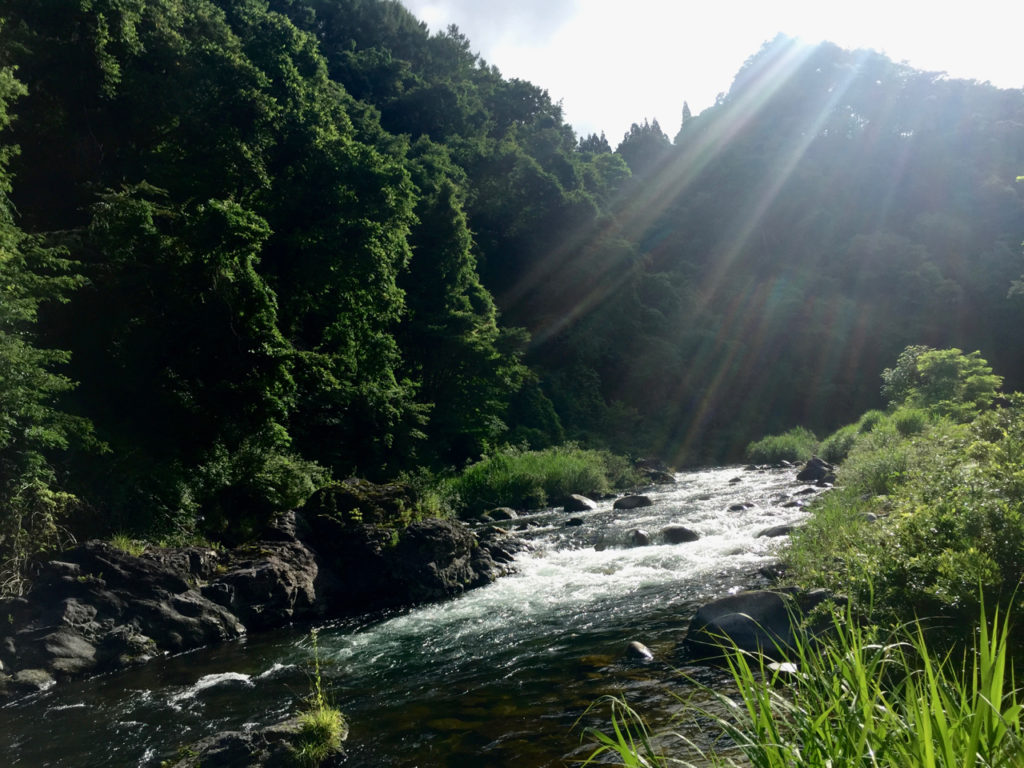
The first stretch that we fished was just above a bridge and along a major road. It was beautiful–as most rivers are, but it was obviously a place that gets a lot of fishing pressure. The next spot was tucked away down a hill and behind a gate. It wasn’t totally remote, but it was gorgeous.
Within a few casts, I had fish looking. But they wouldn’t commit! The small amago would follow my fly, but I couldn’t convince them to eat with a perfect dead drift, a twitch, or nicely worked fly. We tried everything in our admittedly limited arsenal. I’ve fished quite a few small streams and never seen such difficult fishing for such small fish.
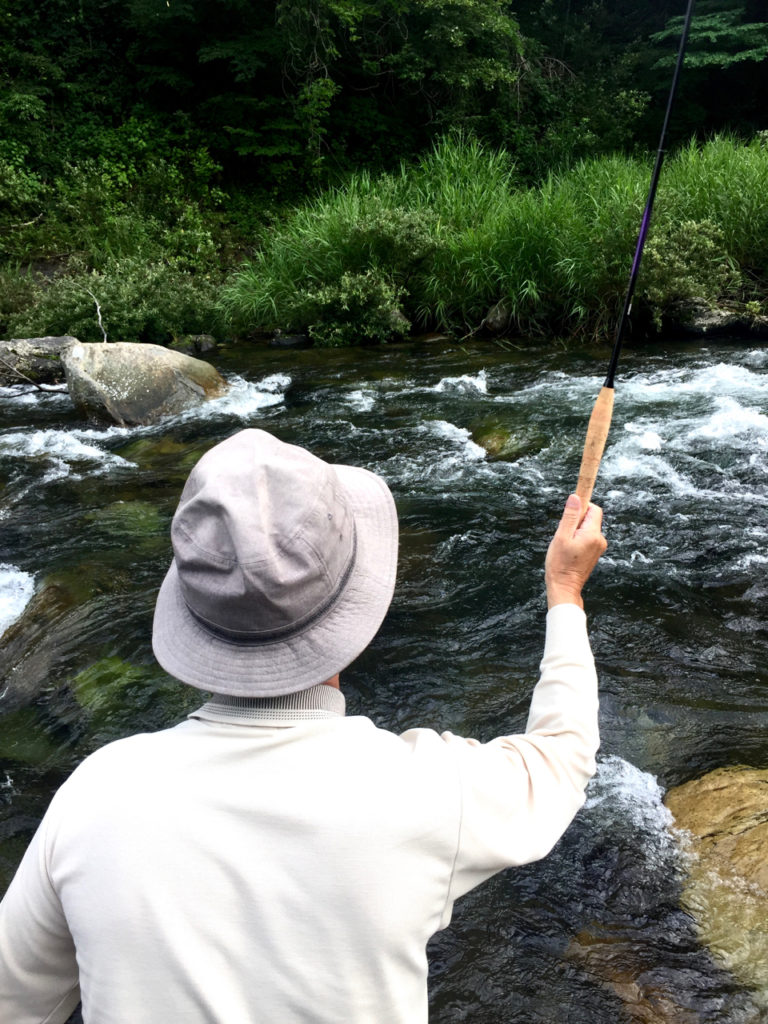
The meter was still running and I had to choose whether I was going to skip the tour’s activities for the day or keep trying. I made the call to give up with no fish to hand. It hurt, but it had still been amazing experience. Escaping a tour group and getting on a river to cast at rising trout seemed like an impossible task at the start of the trip, but I made it happen. A five-incher would have felt like a twenty-incher on this trip, but even that wasn’t in the cards. The total trip came out to somewhere in the neighborhood of $250-$300. An ugly cab fare, but a very fair price for a half day of learning how to tenkara fish.
However, I made a new friend through the universal language of fly fishing. I hope Hiroshi enjoyed playing fishing guide for a day as much as I enjoyed fishing with him. As I thanked him for the day, he left me with a gift to bring home–one of his tenkara lines.
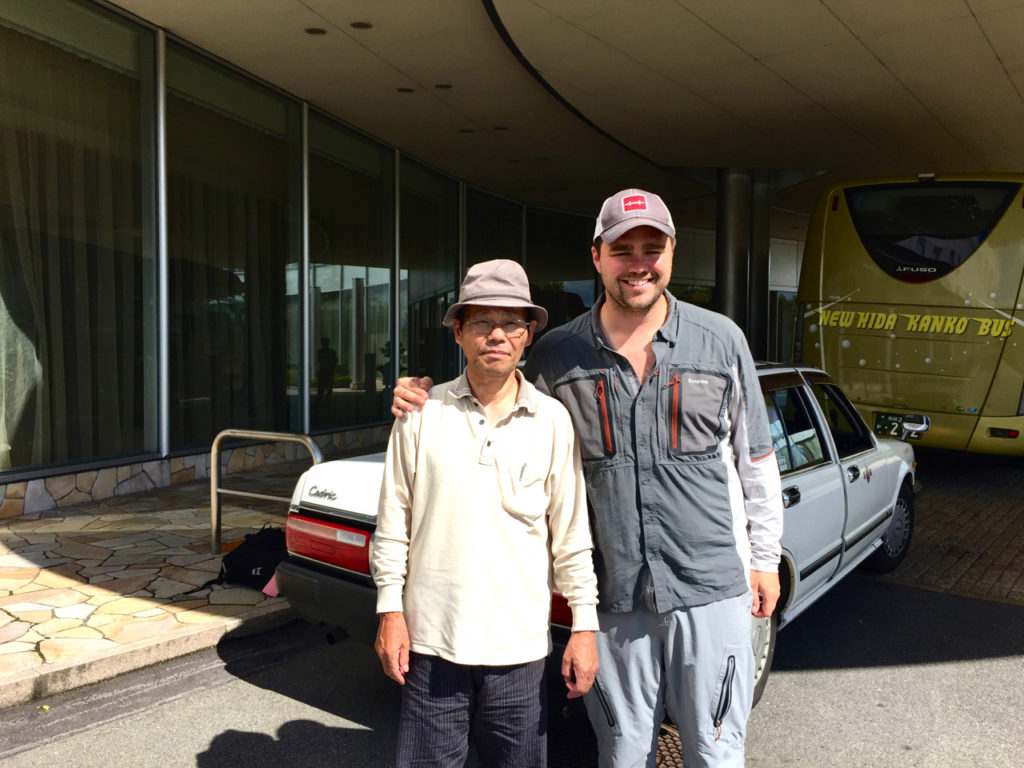
Eat Beef, Not Trout
I made it back in time for a quick breakfast before we left for a museum and a sake tour. I don’t drink and I was already museum-ed out, so I instantly regretted cutting the fishing trip short. The regret lasted a few hours until I discovered Hida beef. Kobe may get all the fame, but the beef from the Hida region blew me away. I don’t like good beef as much as much as I like fly fishing, but it’s close.
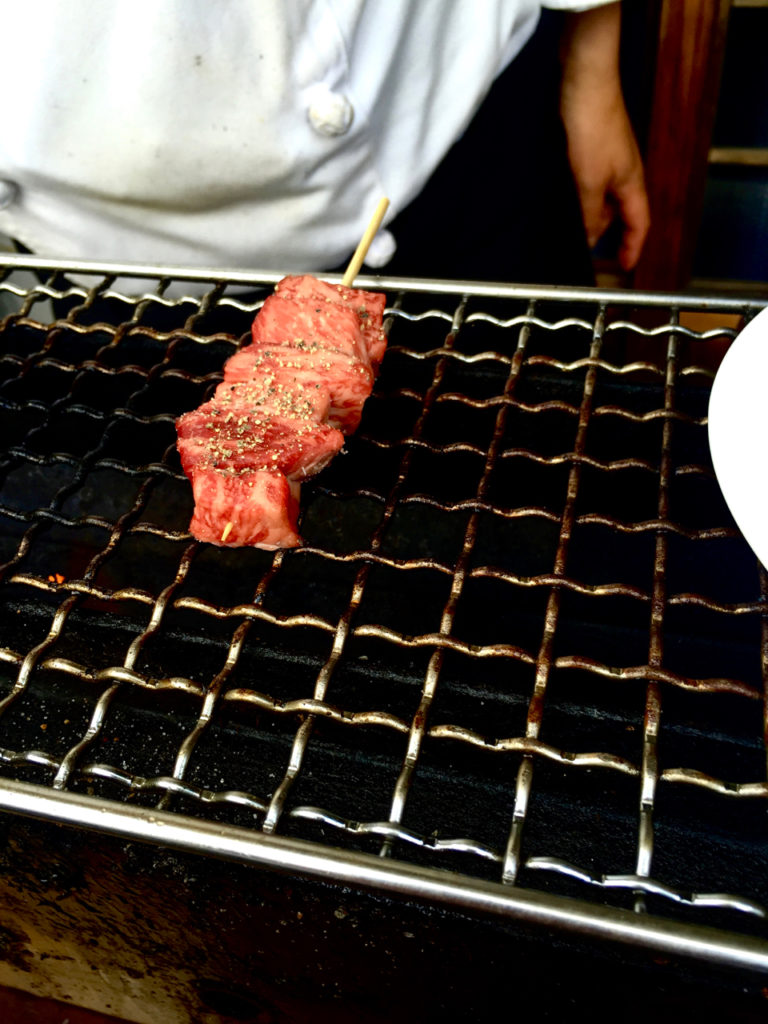
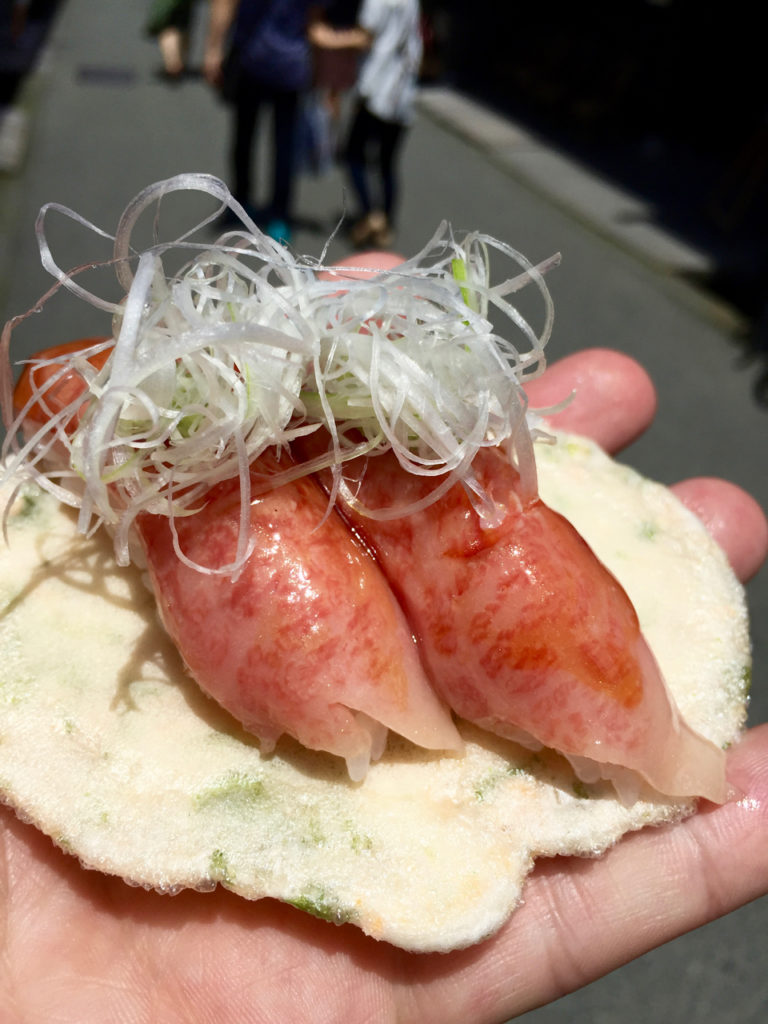
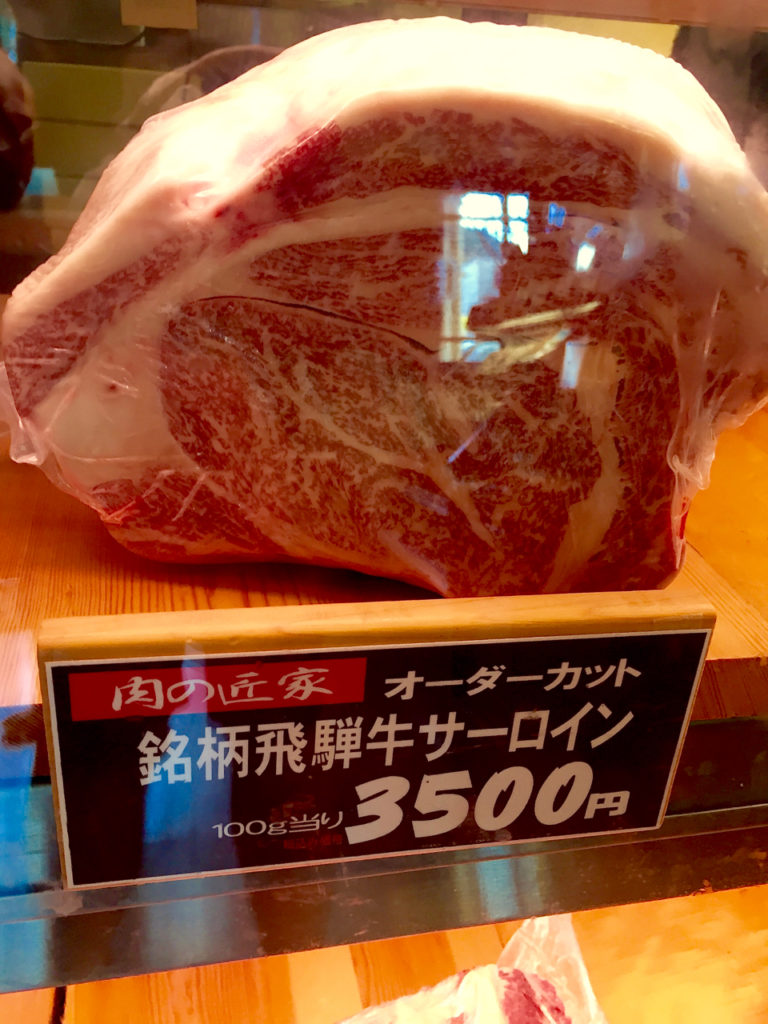
As I took my beef tour of Takayama (which would be followed up that evening with the best steak of my life), I kept thinking about those fish. Hiroshi had called them both yamame and amago. I think there may have been iwana too, but I’ll never know for sure. The language barrier kept many of the details about the fishing a mystery for me. I don’t know if these fish were stocked or wild, but it seemed obvious that the locals were eager to eat them. That’s why most of the fish were so small. Catch and release didn’t seem to be popular in Takayama (and it isn’t across Japan). As I walked by a shop eating a charcoal flavored ice cream cone (it’s supposed to aid with digestion, which is helpful when you eat as much beef as I did), I found packs of pickled amago for 8 bucks. Maybe those fish were farmed somewhere else, but they sure looked a lot like what I was hoping to catch.
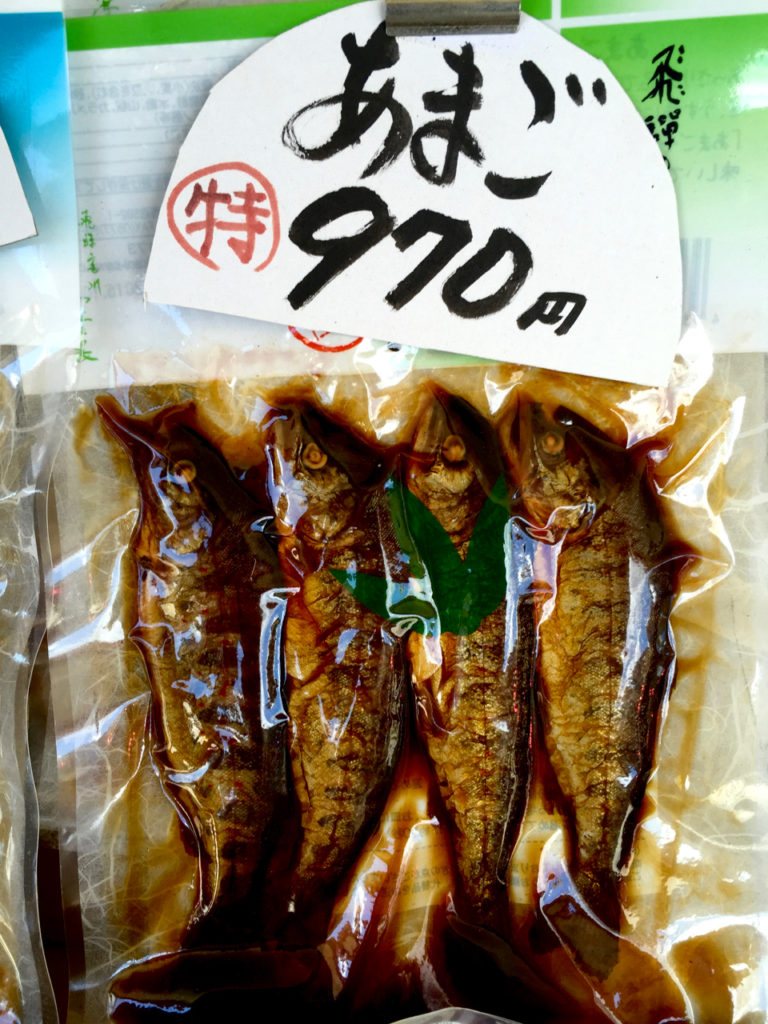
The next day’s bus ride from Takayama to Hakone was bittersweet. The scenery was spectacular–we must have driven past a dozen trout streams that looked even better than the Hida River. I even caught a glimpse of a fisherman crouching in a beautiful gorge–surely catching yamame after yamame. I kept thinking, “if only the bus could stop for 15 minutes to let me fish one of these streams.” We did make one stop, but the stream was far from the road and I once again was without the appropriate fishing license. I will have to return to Japan to catch my first amago, iwana, or yamame.